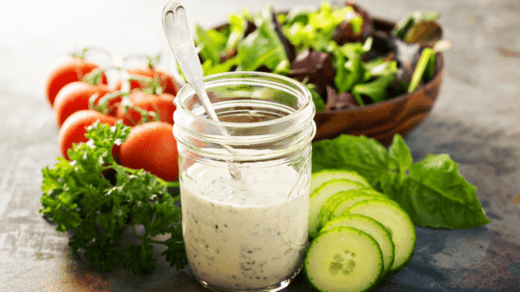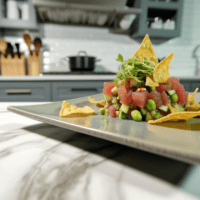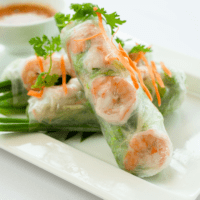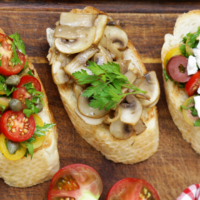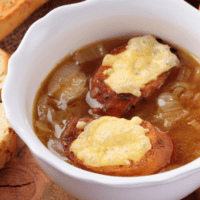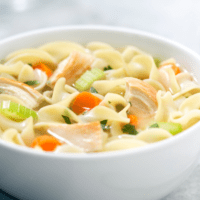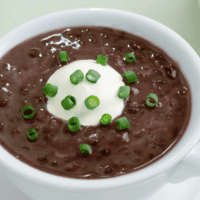Hey There! Some links on this page are affiliate links, which means that as an Amazon Associate, I may earn a small commission at no extra cost to you. I greatly appreciate your support! Learn more on my Affiliate Disclosure page.
Making your salad dressing can seem intimidating, but it’s much easier than you might think. In this guide, you’ll learn how to make mustard vinaigrette, a versatile and delicious dressing that can elevate any salad or dish.
With its simplicity and ability to add a burst of flavor to your meals, the Mustard Vinaigrette is a perfect recipe for both beginners and those looking to expand their culinary skills. This recipe, crafted by Chef Mark Sandoval, is a must-try.
Why You Will Love This Recipe

There are numerous reasons to adore this mustard vinaigrette recipe. It’s a quick fix, demanding just a few minutes of your time. The ingredients are straightforward and likely already in your pantry.
Crafting your dressing gives you the power to regulate the flavors and steer clear of unwanted preservatives found in store-bought versions. This vinaigrette not only tantalizes your taste buds but also promotes a healthy lifestyle, adding a delightful tang to salads, marinades, and more.
Ingredients You’ll Need

Let’s take a look at the ingredients needed for this delicious vinaigrette. Here’s a brief description of each one:
| INGREDIENT | DESCRIPTION |
|---|---|
| Kosher salt | Adds a touch of seasoning to enhance the overall flavor. |
| Sugar | Balances the acidity of the vinegar with a hint of sweetness. |
| Cracked black pepper | Provides a bit of spice and depth to the dressing. |
| Blended oil | A mix of canola and extra virgin olive oil for a balanced taste. |
| Whole grain mustard | Adds texture and a robust, tangy flavor. |
| Shallot | Minced shallot adds a subtle sweetness and depth of flavor. |
| Champagne vinegar | A light, mild vinegar that brings brightness to the vinaigrette. |
Kitchen Tools You’ll Need

Having the right tools makes the process much smoother. Here are the tools you’ll need for this recipe:
| TOOL | DESCRIPTION |
|---|---|
| Chef’s knife | For mincing the shallot and any other chopping needed. |
| Cutting board | Provides a sturdy surface for chopping ingredients. |
| Kitchen towels | For keeping your workspace clean and wiping hands. |
| Mixing bowl | To combine all your ingredients. |
| Measuring spoon set | Ensures accurate measurement of ingredients. |
| Whisk | Helps in emulsifying the vinaigrette. |
Step-By-Step Whole Grain Mustard Vinaigrette Instructions
Now, let’s dive into the step-by-step process of making your mustard vinaigrette.
Prepare the Shallot:
- Start by mincing the shallot using a chef’s knife on your cutting board. You will need about 1 tablespoon of minced shallot.
Combine Ingredients:
- Add the minced shallot, a pinch of kosher salt, a pinch of sugar, and cracked black pepper to taste in a mixing bowl.
Add Mustard:
- Add about 1 tablespoon of whole-grain mustard to the mixing bowl.
Add Vinegar:
- Pour in 2 tablespoons of champagne vinegar.
Whisk:
- Using a whisk, thoroughly combine these ingredients.
Slowly Add Oil:
- While continuously whisking, slowly drizzle in approximately 1/4 cup to 1/3 cup of blended oil.
- This process helps emulsify the oil with the other ingredients, creating a smooth vinaigrette.
Adjust Seasoning:
- Taste your vinaigrette and adjust the seasoning if needed.
- Add more salt, sugar, or pepper to suit your preference.
Serve:
- Your mustard vinaigrette is ready to be used as a salad dressing or marinade.
Tips, Tricks, and Storage Options
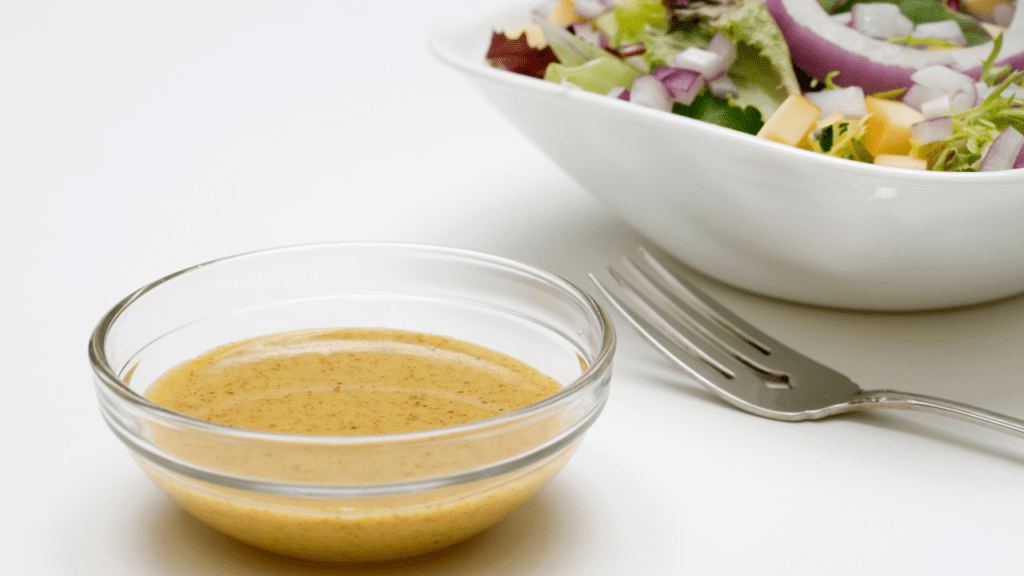
Perfecting your mustard vinaigrette involves both technique and ingredients. Here are some helpful tips, tricks, and storage options to keep your dressing fresh and delicious.
| TIP | DESCRIPTION |
|---|---|
| Emulsification | Add the oil slowly while whisking vigorously to ensure your vinaigrette emulsifies properly. This technique helps blend the oil and vinegar into a cohesive mixture. |
| Flavor Variations | For additional flavor, feel free to add herbs like thyme or tarragon. You can also experiment with different types of mustard or vinegar. |
| Storage | Any leftover vinaigrette can be stored in an airtight container in the refrigerator for up to a week. Shake or whisk before using again; the oil may separate over time. |
Serving Suggestions and Pairings

Mustard vinaigrette is a culinary chameleon, ready to enhance a variety of dishes:
| USAGE | DESCRIPTION |
|---|---|
| Salads | Drizzle over green salads, pasta salads, or grain bowls for a burst of flavor. |
| Marinades | Use as a marinade for chicken, fish, or vegetables before grilling or roasting. |
| Dips | Serve as a dip for fresh vegetables or crusty bread. |
Conclusion

Making your own mustard vinaigrette is a simple and rewarding way to enhance your meals. With just a few basic ingredients and tools, you can create a flavorful dressing far superior to store-bought versions. I encourage you to give this recipe a try and enjoy the fresh, tangy taste of homemade mustard vinaigrette.
Thank you for reading! If you enjoyed this recipe, please leave a comment below and share your experience. Don’t forget to subscribe to our blog for more delicious recipes and cooking tips.
Happy cooking!
FAQs

Can I use a different type of vinegar?
Yes, you can substitute champagne vinegar with white wine or apple cider vinegar. Each type of vinegar will give the vinaigrette a slightly different flavor profile.
What can I use if I don’t have whole-grain mustard?
Dijon mustard is a great substitute for whole-grain mustard. It will give the vinaigrette a smooth texture and a tangy flavor.
How long will the vinaigrette last in the fridge?
If stored in an airtight container, it can last up to a week. Be sure to give it a good shake or whisk before using it, as the oil may separate.
Can I use olive oil instead of blended oil?
Yes, you can use pure olive oil, but it will have a stronger flavor. Extra virgin olive oil can add a rich, fruity note to the vinaigrette.
What can I add to make the vinaigrette sweeter?
Add a small amount of honey or maple syrup to increase the sweetness. This will balance the acidity of the vinegar and add a layer of complexity to the flavor.
Is this vinaigrette gluten-free?
Yes, it is gluten-free as long as the mustard you use is gluten-free. Always check the labels on your ingredients to be sure.
Can I use a blender to mix the vinaigrette?
Yes, a blender can be used for faster emulsification. Compared to hand whisking, it can create a smoother and more stable vinaigrette.
Can I make a larger batch and store it?
Absolutely, adjust the ingredient quantities accordingly. Store the larger batch in an airtight container in the refrigerator, which should last up to a week.
What other dishes can I use this vinaigrette on?
This vinaigrette’s versatile flavor makes it suitable for a variety of dishes. It can be used on roasted vegetables, as a sandwich spread, or drizzled over grilled meats.
Hey There! Some links on this page are affiliate links, which means that as an Amazon Associate, I may earn a small commission at no extra cost to you. I greatly appreciate your support! Learn more on my Affiliate Disclosure page.



